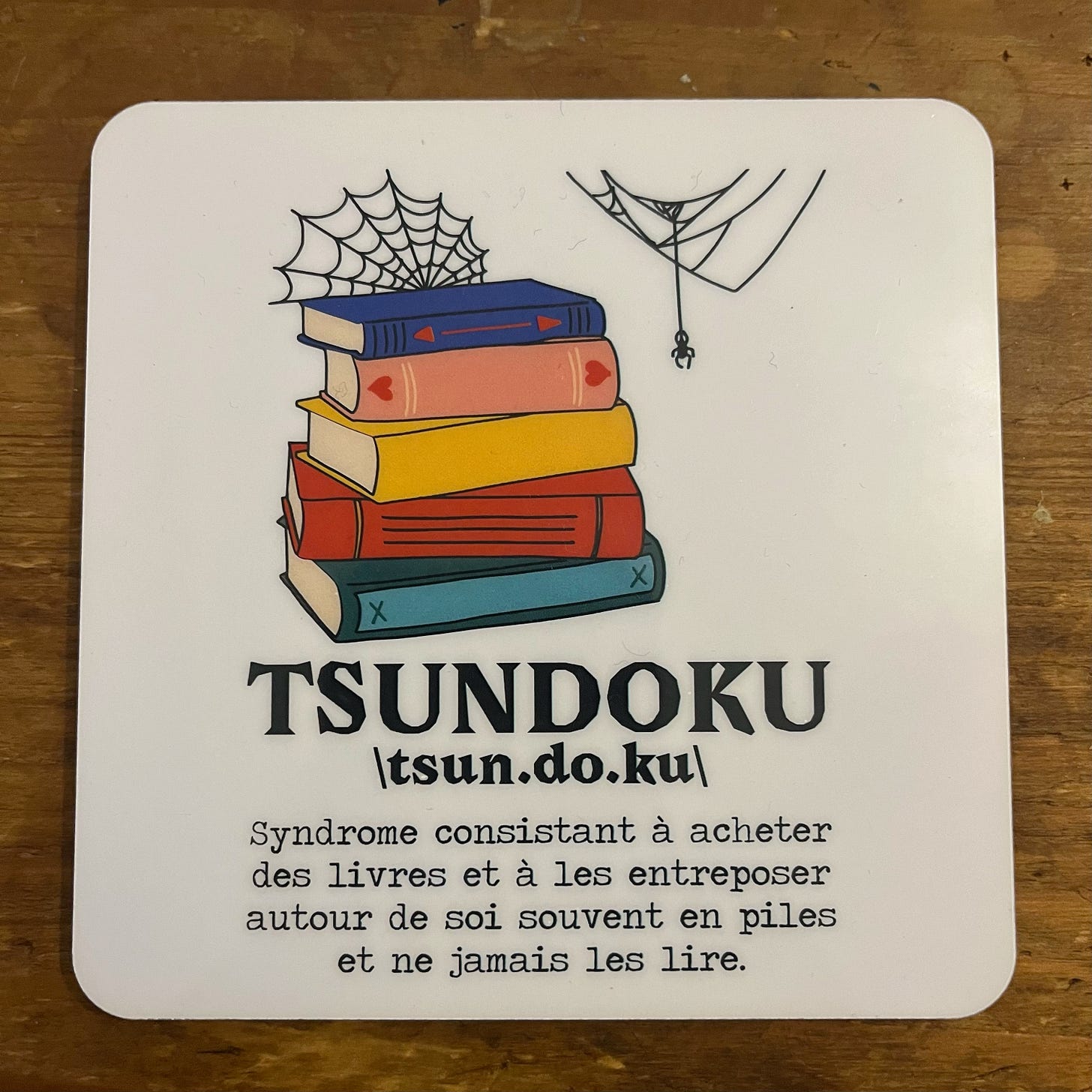I read most of this novel in one night at the Lyon airport. I had somehow managed to pass through an era of Sally Rooney mania without reading any of her books or seeing any of the TV adaptations, but finally someone put Normal People literally in my hands and said, “Read this” (it was my dear friend, Rachel, who may well be reading this if she was able to slog through the first six thousand words; Rachel also gave me a coaster, pictured below, that perfectly describes the chronic illness that made me start this blog).

It helps that in my futile struggle against the tide of unread books that I own, I have committed to prioritizing some of my borrowed books, so that at the very least I can quickly close those lines of social credit.
This was a pretty easy read, too, but not in the same way Patchett’s book was easy. I’ve often had a hard time reading novels, because many novels feel to me like they required too much scaffolding to make the story immersive (backstory, setting, context, etc etc), and since I know the scaffolding is made up, it can feel arbitrary and therefore pointless. But I had no trouble getting invested in this story.
It feels ridiculous to summarize, since probably most people who read books will have read this one before me, or will at least have seen the TV series, but the book is sort of a love story between two Irish teenagers, beginning in high school and following them through college. The structure is episodic (which I imagine helped the screenwriters to adapt it for TV), with chapters that are often very concentrated in time — happening on a single day, or over a week or two — and gaps between the chapters that usually span months. It ends up feeling like a highlight reel of the five or six years these characters have known each other.
So the structure is one thing that keeps the novel entertaining. I also think (and this might be a weird take) that the age of the characters heightens the drama. What I mean is that adolescence is such an emotionally intense time even if, to an outside observer, the stakes of our choices may seem lower at that age. If I read about a 30-year-old experiencing a sanity-scrambling crush, or a tough break-up, or a betrayal, it’s not as likely to hit me as hard as reading about a 16-year-old go through those same experiences. Maybe I tell myself that the 30-year-old has been here before, and that their larger perspective makes it easier to cope. I don’t know. Maybe I should just read more YA fiction.
And then there’s the (probably unrealistic) charisma of the characters. Maybe wit is the birthright of the Irish. Or maybe the kids Rooney chooses to follow are simply of higher than average intelligence (there’s certainly evidence for that: both end up with very prestigious scholarships and get their grad school studies paid for). But I thought it was remarkable how much these kids knew who they were and what they wanted, and how much they seemed to understand about the world. Even if a lot of the novel’s conflict comes out of their confusion and uncertainty about who they are and what they want (is this love? how much am I willing to risk for this person? do I belong to this social group? can I make it on my own?), the way they navigated that confusion felt surprisingly self-possessed and didn’t really diminish their charisma. Connell and Marianne have the cool and the self-assurance that the 25-year-olds had who used to play high schoolers on TV in shows like Smallville and Friday Night Lights.
I should be pulling out textual evidence to substantiate this point, but I have already written a lot for this month’s posts, and I am tired and short on time, so I don’t feel like digging. Let’s just call this a “feeling” rather than a claim and call it a day.
Anyway, unsurprisingly, I like Sally Rooney and will be reading more of her.




